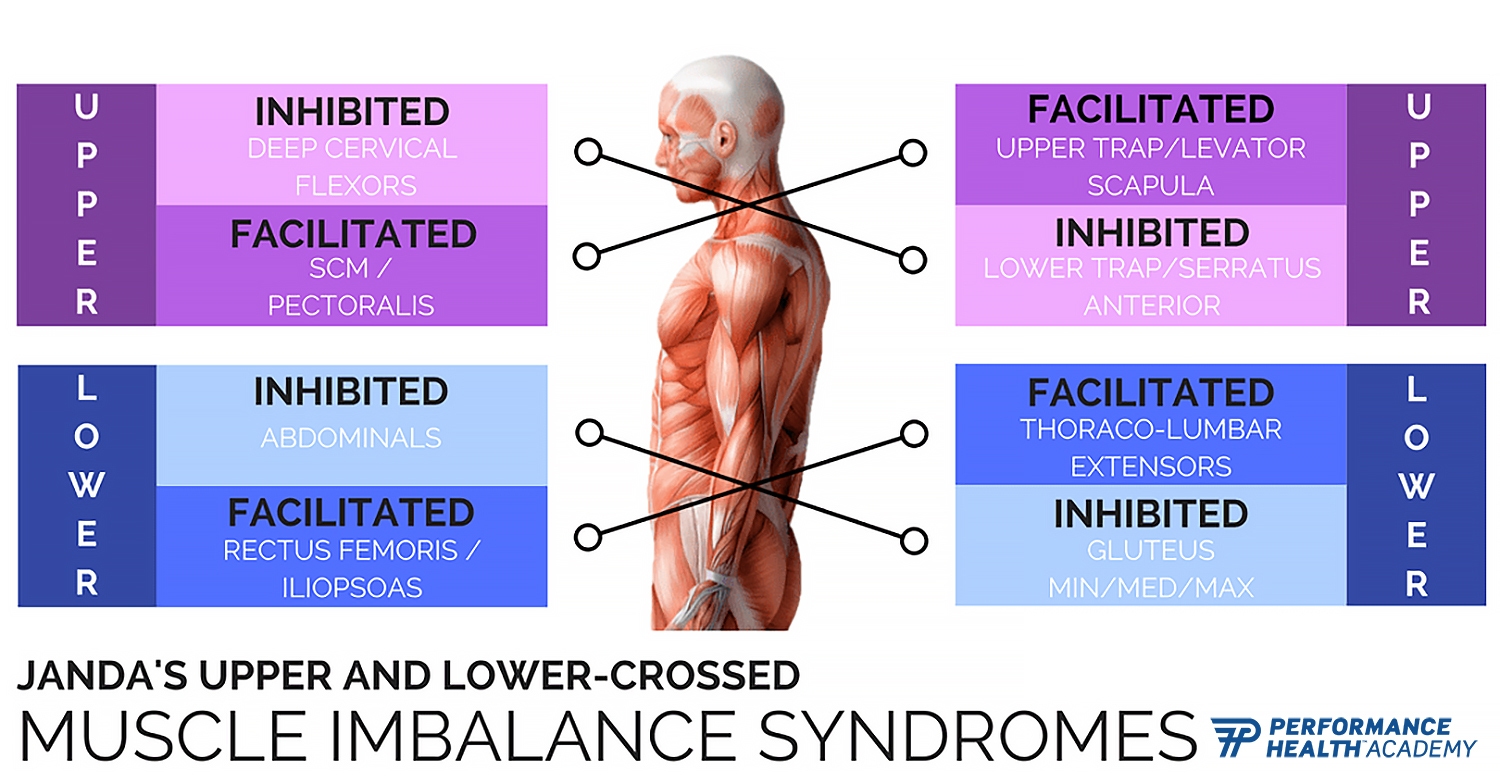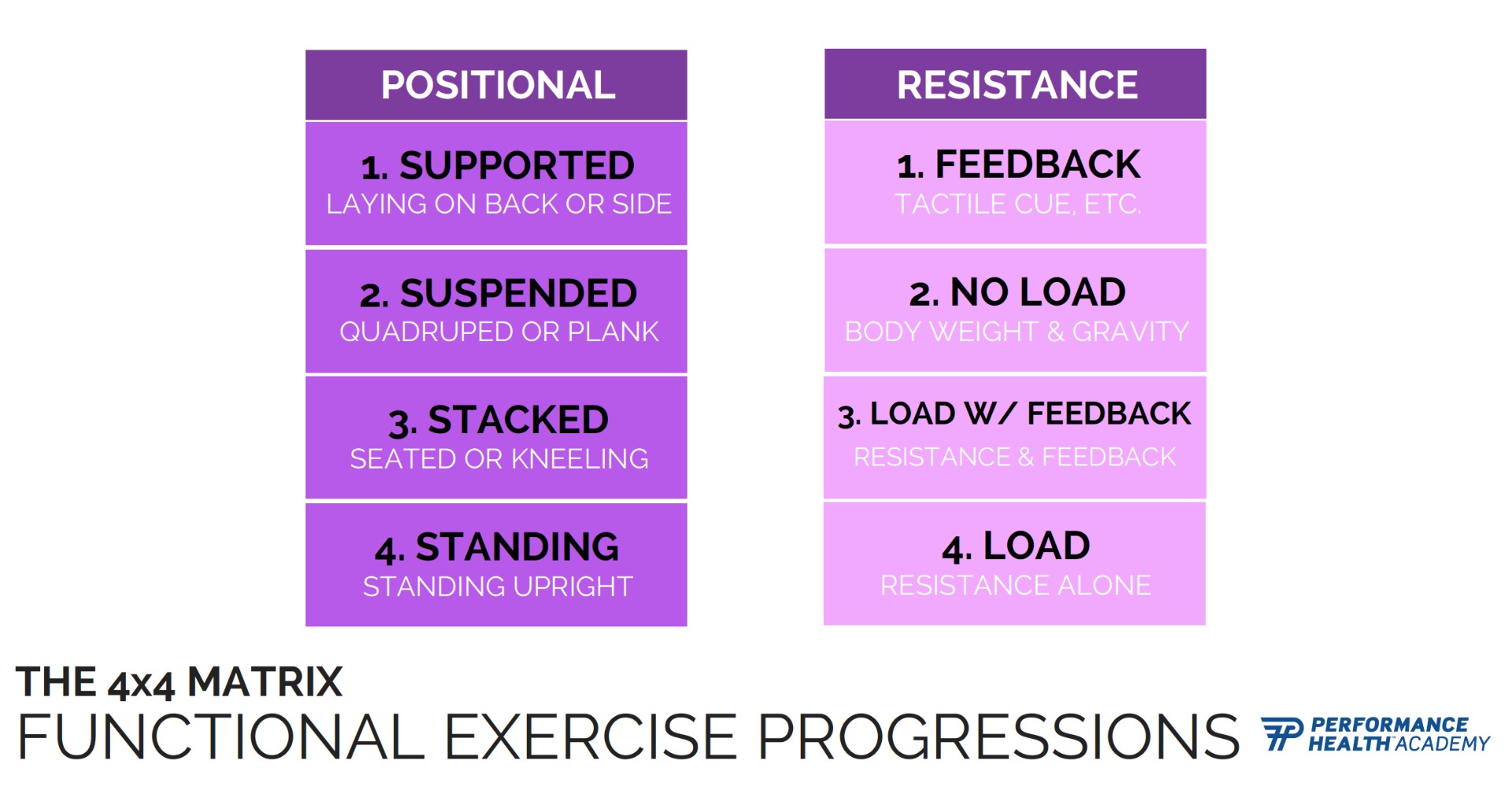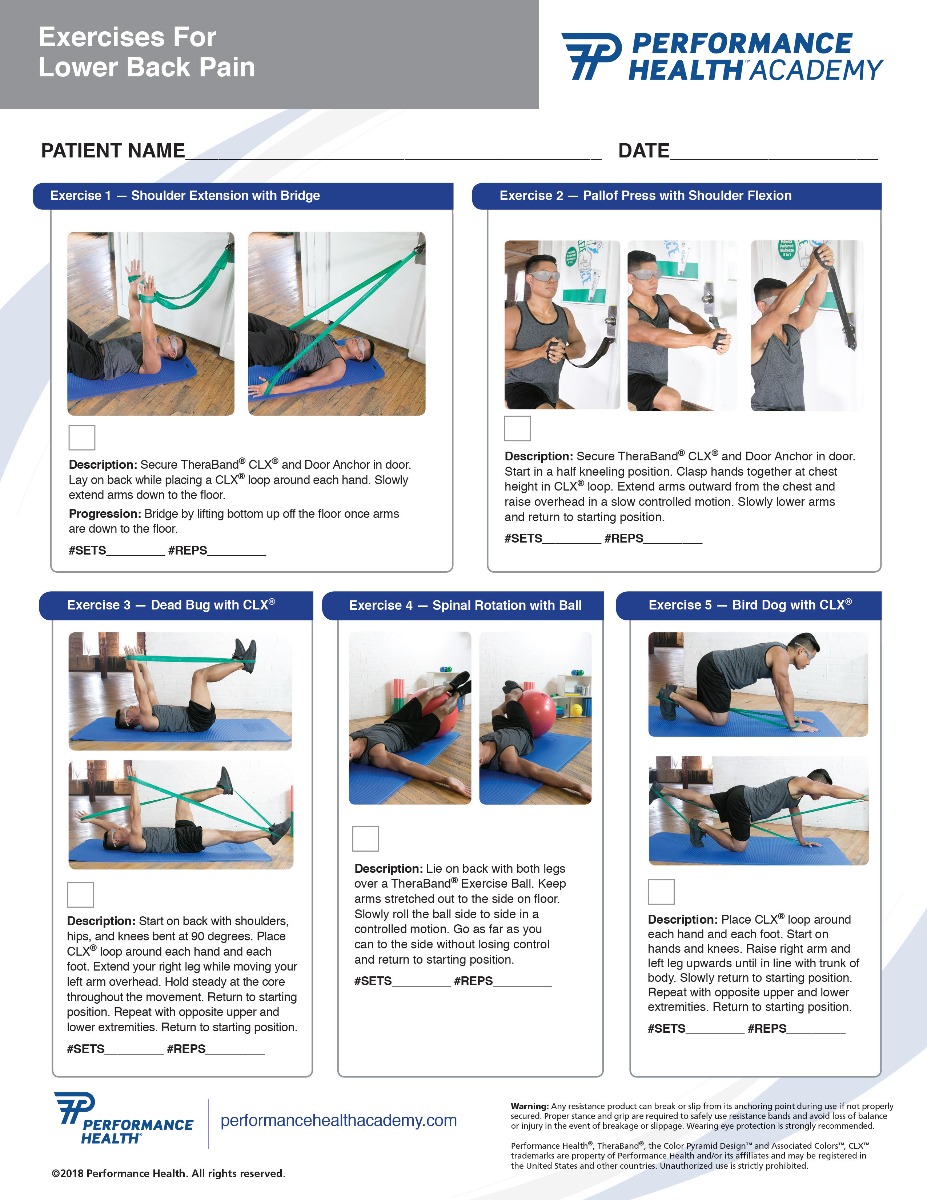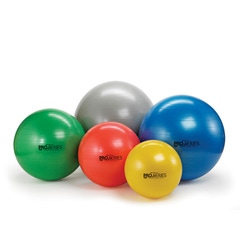How to Identify and Treat Chronic Low Back Pain with Exercise

Key Takeaways
- Lower back pain is a common ailment that affects over 33% of adults in the UK every year
- Common causes include back injury/surgery, overuse, poor ergonomics/sedentary lifestyle, and lower-crossed syndrome
- Prescribed exercises should rebuild proper movement patterns and correct posture following a 4x4 Matrix for Functional Exercise Progression
- Watch a video to find lower back exercises your patients can do that aren’t complicated or equipment-heavy
Top Products in This Article
Low back pain is one of the most common ailments experienced by the population. In fact, it’s estimated that lower back pain affects 33% of the UK adult population every year.
Clinicians are experiencing an influx of these pain sufferers into their clinics every day. Because of the role the lower back plays in movement and support, identifying the root cause of the pain is a dynamic task even for the most seasoned of healthcare professionals. However, in a situation that can be as physically and mentally debilitating as chronic low back pain, quality assessments are extremely important.
Before you can treat the pain, you must find what’s causing it!
- What causes chronic low back pain?
- How to Prescribe Exercises for Chronic Low Back Pain Relief
- Low Back Pain Relief Exercise Protocol
What causes chronic low back pain?
There are four main causes of low back pain that clinicians should take into consideration when assessing their patients:
Back Injury/Post-Surgical
The most obvious to identify, patients who have sustained a back injury or undergone surgical procedures are undoubtedly going to experience some level of pain during rehabilitation.
Overuse
Often found in athletes, manual laborers, or people who are on their feet for most of their day, low back pain commonly presents itself in those who are constantly on-the-go. More specifically, those who are moving in incorrect or compensatory patterns.
Poor Ergonomics/Sedentary Lifestyle
On the opposite end of the spectrum, a great deal of the population spends almost their entire day sitting; time spent driving, working, and watching television adds up quickly. To make matters worse, if this sitting isn’t done in a proper ergonomic position, back pain is even more likely to occur. Regardless, pain is seemingly inevitable for those leading a sedentary lifestyles, as compression on the lumbar spine and decreased disc height are bound to develop overtime.
Lower-Crossed Syndrome
This muscle imbalance syndrome is characterised by tight thoracolumbar extensors on the dorsal side cross with tight iliopsoas and rectus femoris, as well as weak deep abdominal muscles cross with weak gluteus maximus and medius. The longer patients are experiencing these postural compensations, the more likely they are to experience chronic low back pain.

Even if you identify the root of the pain, everyone experiences and tolerates pain differently. Lindsay Becker PT, DPT, SCS, CSCS, CGFI-M3, a physical therapist working primarily with golfers, deals with low back pain on a regular basis and is constantly faced with this conundrum.
“Not all back pain presents itself the same,” says Becker. “Even if we find that two people have, for example, a disc bulge, one person may prefer more flexion-based movements while another may prefer more extension-based movements. It’s really taking that person as an individual; when does it hurt, what movements hurt, what can they do, not do, looking at the joints above and below and seeing if there’s range of motion deficits or strength deficits elsewhere that can be placing increased stress on the spine and then trying to go from there. There’s just so much going on in that area that really trying to figure out from an evaluation standpoint is really the biggest thing in helping us treat this."
So many causes, so many avenues of rehabilitation to explore. However, the most utilised method by Dr. Becker in most scenarios is corrective exercise. While the use of pain medication, topical analgesics and other methods may temporarily relieve low back pain, using therapeutic exercises addresses the root of the problem, resulting in lasting results.
Offer your patients temporary pain relief with these products!
How to Prescribe Exercises for Chronic Low Back Pain Relief
No matter what and where the pain stems from, exercise prescription for patients with lower back pain should be a delicate, methodical process. The goal should be appropriately challenging the muscles in the core, hips and glutes to rebuild proper movement patterns and correct posture.
“When I prescribe different exercises, I like to use a variety of postures to challenge or decrease the challenge of the stability of the spine,” said Becker. “I start off with exercises that are in non-weight bearing positions like supine, just focusing on the activation of some of the muscles around the core, but not having to stabilise the spine against gravity. Then we start to move up through our different postures like quadruped, kneeling and finally standing to continually and progressively load the spine against gravity to get us back to more of a functional posture."
Using the 4x4 Matrix to Position Exercises Appropriately
The method Dr. Becker follows is outlined completely in the 4x4 Matrix for Functional Exercise Progression. Commonly used in Selective Functional Movement Assessment (SFMA) protocol, this method utilises two factors to determine the correct class of exercises to use in rehabilitation based on the patient's pain and ability:
- The Positional Side (left) - based on the neurodevelopmental process and represents the posture the patient will be performing the exercise in (supported, suspended, stacked or standing)
- The Resistance Side (right) - the type of resistance that the patient will be using while performing the exercise (feedback, no load, load with feedback and load alone)

Not pushing patients past their limits is the key to all exercise, but even moreso for something as delicate as lower back rehabilitation. Following the 4x4 Matrix allows your patient to progress to exercise that meet their pain tolerance and abilities.
Low Back Pain Relief Exercise Protocol
Lower back pain exercises don’t have to be complicated or equipment-heavy; all you need is a TheraBand CLX Consecutive Loops Band and a TheraBand Pro Series Exercise Ball to create real relief.
Get the supplies you need!
In this section of the Injury Management Series, Dr. Becker introduces you to the rehabilitative exercises she uses in her practice every day.
Hear from Dr. Becker herself while you check out the full playlist of her exercises
Save and use this PDF to incorporate them into your practice for patients of all ages!

References
1. London: Royal College of General Practitioners (UK). (2009). Low Back Pain: Early Management of Persistent Non-specific Low Back Pain. (NICE Clinical Guidelines, No. 88.) 2, Introduction. National Collaborating Centre for Primary Care (UK). Retrieved from https://bit.ly/2P35tcr
Medical Disclaimer: The information provided on this site, including text, graphics, images and other material, are for informational purposes only and are not intended to substitute for professional medical advice, diagnosis or treatment. Always seek the advice of your physician or other healthcare professional with any questions or concerns you may have regarding your condition.






 US
US France
France Australia
Australia



